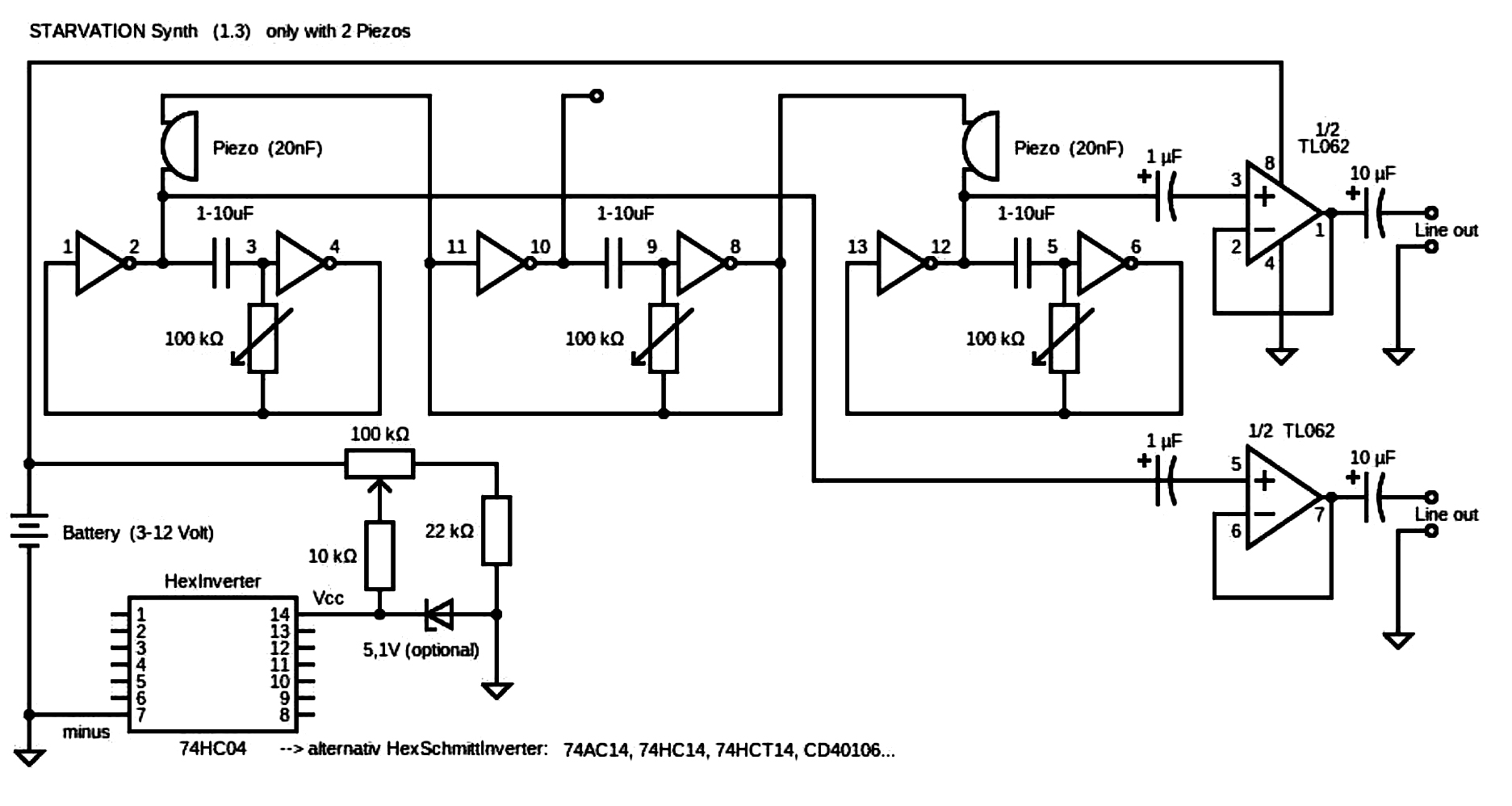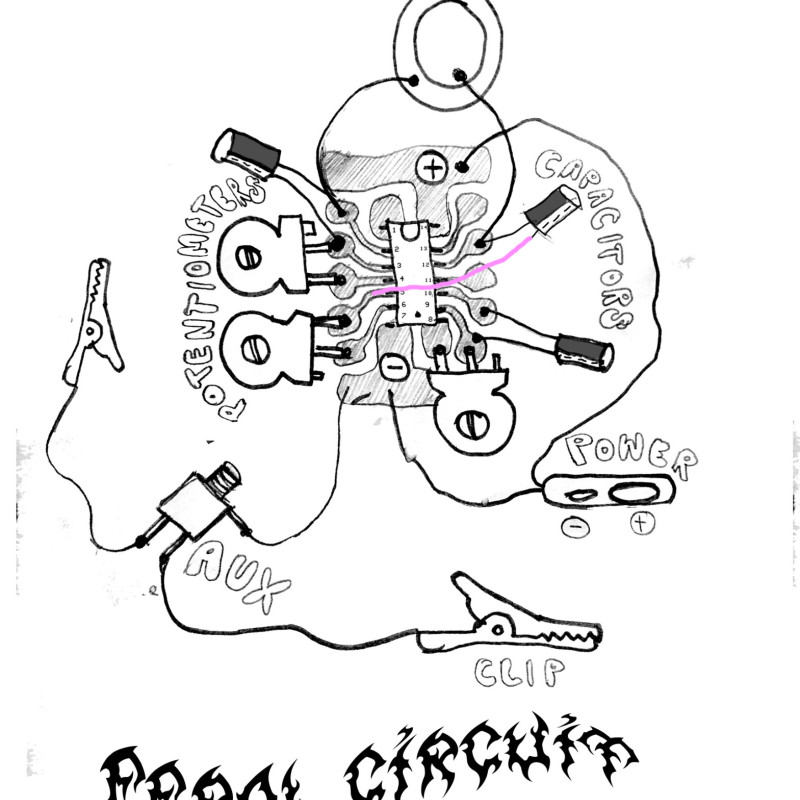Feral Circuits

This low power synthesizer, introduced to us by energy art friend Ralf Schreiber, has been an important companion throughout the project, allowing us to test/hear/feel different electrical energies generated by our prototypes and environments. Instead of relying on multimeters and other standard numerical measuring devices (which are not so good at handling small, intermittent energies anyway), the feral circuits have given us a more embodied sense of electrical energy, and a palpale imaginary of how electronic circuits could be more alive/sensitive/ and part of an ecosystem.
How it works:
A simple CMOS (hex inverter IC) based three-voice oscillator, low energy creating unstable circuit states that generate variable and organic rhythms. The synth needs almost no power (<0.5mA) and can be . With different hex inverter ICs (also combined and stacked on top of each other) many different sounds can be created.
How to make your own:
We have made countless versions over the years, and Ralf, the SGMK and broader community have also developed numerous versions.
Flying Circuit
You can make the simplest, cheapest 'flying circuit' version, where all you need are the components, a bit of jumper wire, and solder, to make a synth that changes only by the power input changes and environmental conditions (heat, humidity)... steps in the diagram below. We used crocodile clips to connect to an aux jack for the sound. Connect one crocodile clip to the ground (-) and another crocodile clip to SOMEWHERE on the circuit - the legs of a capacitor usually sounds good.

Nonagon Edition
These two are the core circuit, and from here you can add many components.
Or, you could make a Printed Circuit Board (PCB), and create the circuit where we can tune it / play it / adjust it electrically, using potentiometers to change the resistance, and a piezo/s to connect the oscillators.
PCB stencils below:
Step-by-Step diagram:
In this diagram, we used a battery clip as we were working with 'dead' batteries from the trash, but you can swap this for any low power source.
Ralf has developed more complex versions which also include a filter, input voltage potentiometer, nice case, slider potentiometers. whose oscillators are coupled to each other via 2 piezo elements. The battery voltage can be reduced using a potentiometer, Two buffer stages stabilize the outputs and make them independent of the load. operated with weak, almost empty batteries (3V-9V)
https://ralfschreiber.com/share/Starvation-Synth-Workshop.pdf
https://github.com/sgmk/Case_StarvationSynth



